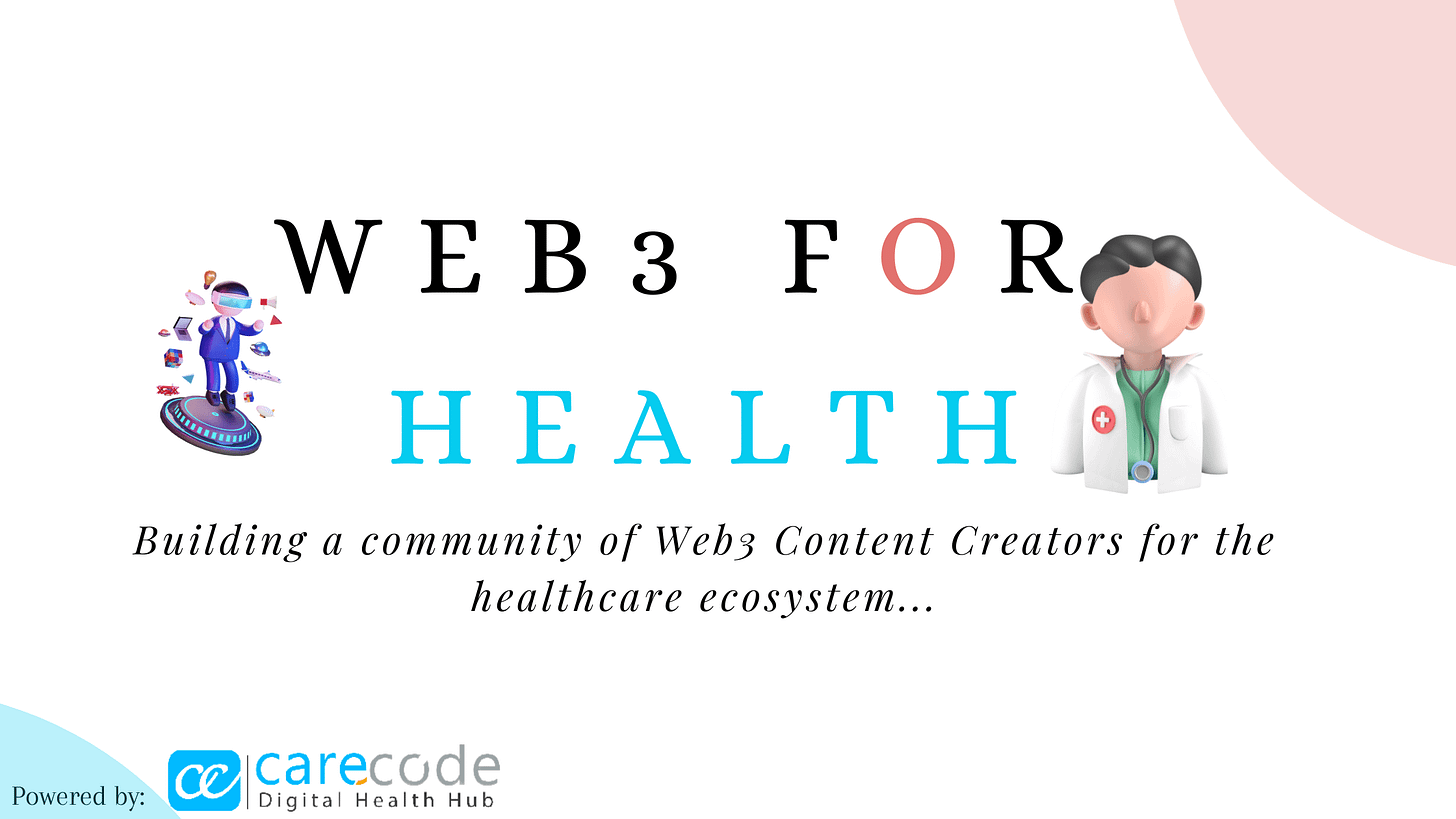Table of content
Introduction: Important Features of Web3
Current Examples of Web3
Potential Benefit of Web3
Web3 In Healthcare
About Web3 For Health
Introduction
What is WEB3? Things You Need to Know.
Web 3.0, also known as Semantic Web or read-write-own, is the future of the internet.
Artificial Intelligence (AI) and Machine Learning (ML) enable computers to analyze data in the same way that humans do, which aids in the intelligent generation and distribution of valuable content according to a user's specific needs.
One of the many goals of Web 3.0 is to offer people control and ownership over their data. To cut out the intermediaries, allowing individuals to give services to one another and decide what portions of the internet they utilize.
Web3 guarantees ownership of your data, assets, and digital identities and enables the benefit of data privacy.
Important Features of Web3
Web 3.0 has many prominent differences compared to its predecessors, especially due to the fundamental structural changes.
Here are the four most notable traits of Web3:
Semantic Web: Semantic Web can allow users to create, share and link material through search and analysis. The search and analysis capabilities with web 3.0 would focus more on understanding the meaning of words and the context behind them.
3D Graphics: Web3 could help reimagine graphics technologies and ensure easier interactions with three-dimensional virtual worlds or the metaverse. The three-dimensional design is a typical highlight in web3 applications, services and websites. The 3D graphics help web3 create immersive worlds for gaming and other crucial applications in different sectors like healthcare, e-commerce and real estate.
Blockchain and Decentralization: Blockchain technologies are another notable entry among top web3 features with the ability of blockchain to introduce decentralization. As a result, web3 applications and systems could ensure cryptographic security for user data.
Current Examples of Web3 Use Cases: Top Web3 Applications include Everledger, Storj, Brave Browser, Beaker Browser, Decentraland, Steemit, and Ethlance.
Potential Benefits of Web3
Why Web3?
Web3 has potential benefits, which include the following:
Data Ownership: Web3 and decentralization are powered by blockchain technology, which also democratizes content generation and cuts out the intermediary.
Collaboration: The DAO (Decentralized Autonomous Organization) management model, which replaces boards and executives with rules expressed in code, is the foundation of Web3; this makes it possible for anyone to participate. Over the next ten years, many conventional businesses will switch to DBOs.
Privacy: With a decentralized identity system, you can control your online identity and personal data. Web3 gives you more exact control over the data you make publicly accessible online and who can access it.
Opportunities: Since Web3 is open source, anyone can build on top of other projects, allowing for the reuse of current content to create new content and fostering innovation across the Web.
Transparency: Users may see the site's source code and keep track of their data attributable to the decentralized Web. Every stakeholder will always be aware of the value and business to which they are connected.
Limitation of Web3
User Experience: The technical barrier to getting started with web3 is currently too high. Users must troubleshoot security issues, unravel complex technical documentation, and navigate unintuitive user interfaces.
Difficult To Navigate: The Web3 ecosystem still lacks practical functionality and user experience to form the computational infrastructure capable of replacing our current Web2 systems. It will take some time before it becomes more user-friendly and widely adopted.
Device Incompatibility: Devices that aren't advanced will not be able to host the many intricacies and complexities of Web3. To use Web3, users will require devices that can conveniently and efficiently handle the new technology.
Difficult To Regulate: Some experts feel decentralization will make monitoring and regulating Web3 more difficult. Various expected changes in content models and spatial planning in the metaverse will result in certain spaces facing access control and cost barriers put in place of traditionally free service.
Web3 In Healthcare
In the next part of this article, we will examine how healthcare can or plans to leverage Web3 technologies.
Web3 is an ambitious project that promises users a lot of goodies. From more robust security, decentralization, and smooth user experience to better and deeper collaboration.
Though the present digital community is still a few years away from really harnessing the potential of Web3, many teams and organizations are already building functional sub-ecosystems on the broader Web3 ecosystem.
A host of healthcare startups are already actively building promising Web3 solutions for the healthcare community.
In the next part, we will take a closer look at these startups and how they are innovatively manoeuvring the many challenges of building Web3 ecosystems in a digital community still widely dependent on Web2 technologies.
If you haven't yet subscribed, kindly do so now. It's free.
About Web3 For Health
This article is part of “Carecode Digital Health Hub’s Web3 For Health Campaign.”
We are bringing together a community of content creators to create content about Web3 to help expose healthcare professionals to the importance of Web3 to healthcare practice and delivery.









